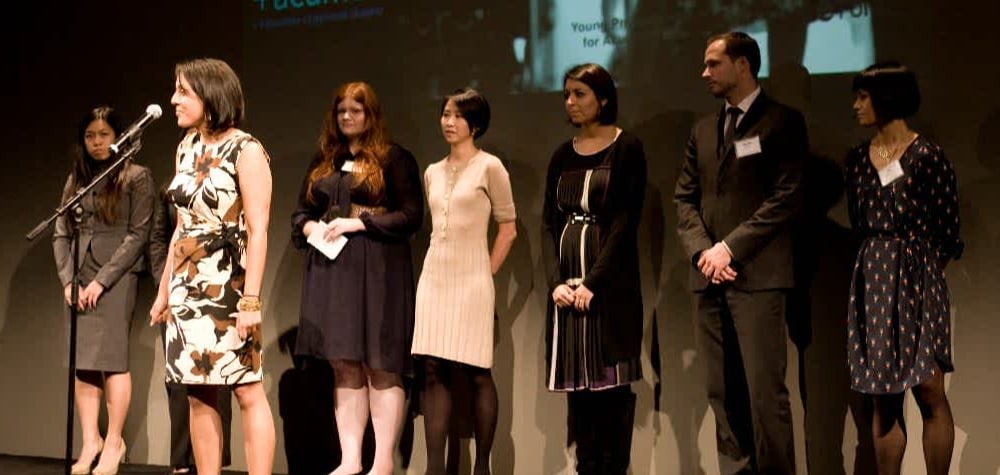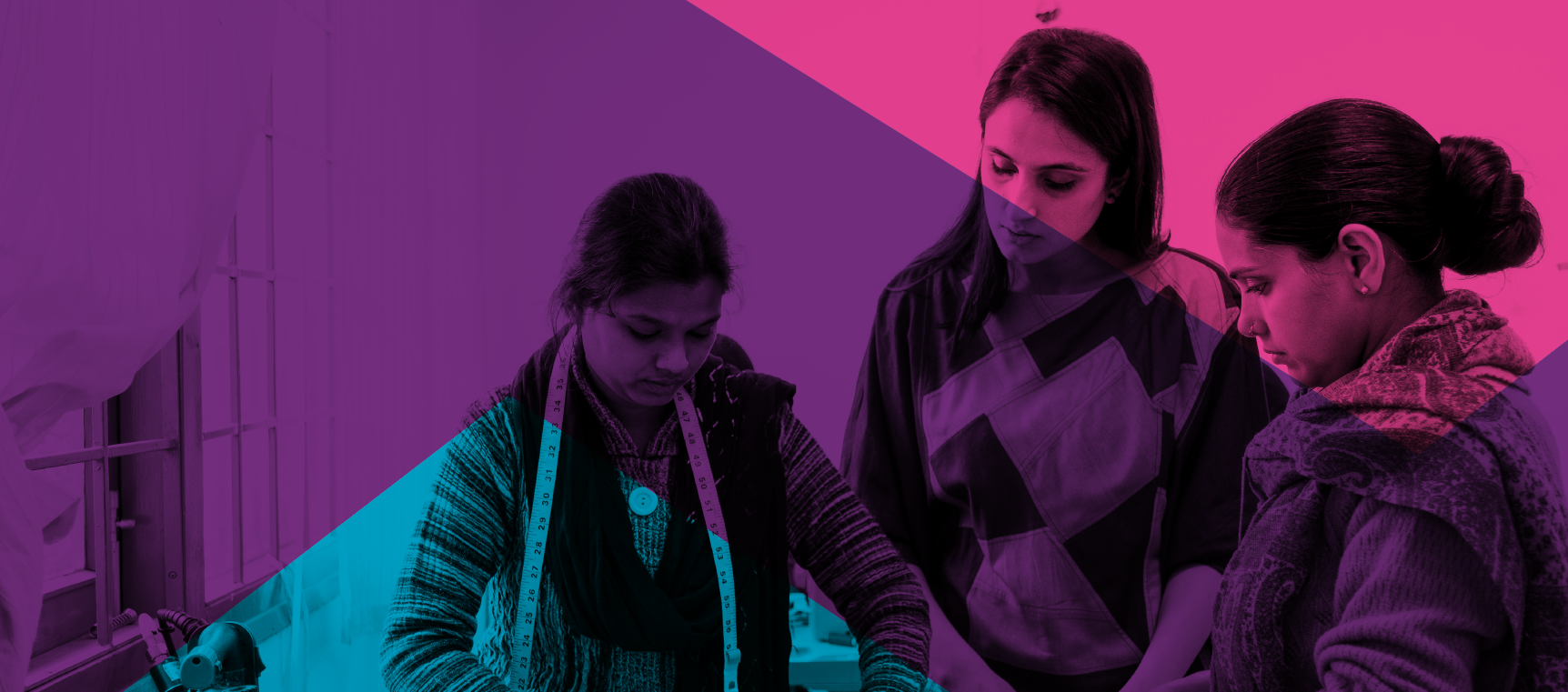Fund Your Idea
6 tips for Crowdfunding your Social Enterprise
Acumen community crowdfunders share their top tips for running a successful campaign
November 29, 2018

In 2014, Acumen Fellow, Waqas Ali, ran one of the most successful crowdfunding campaigns ever to come out of Pakistan. He reached his goal of $15,000 in just 22 hours and went on to raise $107,286 in total – 715% of his original goal. No small feat for a small shoe company from Lahore, Pakistan.
Gone are the days when the only option for raising money included a visit to your local bank. Crowdfunding is emerging as one of the most popular fundraising techniques for early stage entrepreneurs. A 2015 report by Massolution predicted that crowdfunding would account for more funding than venture capital in 2016.
Whether you’re running a startup social venture or nonprofit, you might have thought about running your own crowdfunding campaign. We caught up with a number of founders in the Acumen community to learn their top tips for running a successful crowdfunding campaign for your for-profit social enterprise.
1. “KICKSTARTER IS THE LAST STEP, NOT THE FIRST ONE.” – SETH GODIN
A crowdfunding campaign is not a shortcut for building a community of supporters. You will be sorely disappointed if you expect a crowdfunding platform to magically drive people to you. You need to do the work of finding that community and cultivating them in advance. Once you find your fans, crowdfunding can be an amazing amplifier and a way to add to your tribe.
“About 2 months before your campaign launch, put a sign up form on your website,” Waqas suggests. “Gather everyone’s email addresses so that you can email them when you’re ready to launch, and they can back you on the first day.”
Taking it one step further, Natalie Grillon and Shahd AlShehail of Project JUST, an ethical fashion and transparency technology company, reached out to their community to collect pledges in advance of launching their campaign. Not only did this build a list of supporters they could count on when the campaign launched, it gave them a sense of how much their community was already prepared to give before they launched and helped determine a reasonable goal to set for their campaign. They recently exceeded their fundraising goal totaling just over $45,000.
This also means that crowdfunding may not be for you if you’re already having trouble finding supporters. “Crowdfunding is wrong for people who are in operation, but not doing well,” says Waqas. “It’s not about raising extra money to get by.”
Bre DiGiammarino, Senior Director Social Innovation at Indiegogo, shared in an interview the benefits of running a crowdfunding campaign over and above the funding itself. She explains below how crowdfunding can be strategic for both startup and established companies alike, for goals like raising awareness about their work, building their audience, or gaining product-market insight earlier than ever before.

Watch Now
Close
2. DO YOUR HOMEWORK. KNOW YOUR PLATFORMS
In 2012, there were 700 crowdfunding platforms in the world. Today, there's nearly 1,500 platforms and more emerging each day. Kickstarter and Indiegogo are two of the most popular and well-known platforms but crowdfunding sites are some of the fastest growing forms of alternative financing so you’ll want to do your homework to find the one that best suits your organization’s needs.
“We used the Milaap platform because it was ‘more Indian’,” says Ashweetha Shetty, Acumen Fellow and founder of Bodhi Tree Skills. “We were raising money to train rural Indians, so we wanted to connect with Indians specifically.”
When it comes to the Kickstarter versus Indiegogo debate, crowdfunding guru Clay Hebert strongly recommends consulting the Kickstarter categories first. If you don’t fit into one, don’t use it. A strong case for Indiegogo is that, for an additional fee, you can take home whatever amount is raised versus on Kickstarter which is an all or nothing model. Take a look at projects on both platforms to get a sense of where your project might fit best.
Everyone has their opinion on which platform is better. Determine which will best help you reach your target audience, and on which platform your project fits most. Here are some examples of the decision factors that our community members faced when choosing which platform to use:

3.“DON’T MAKE A HOLLYWOOD VIDEO.” – WAQAS
A good video is important because it’s the first impression the potential backers have of you and your project. “Platforms will tell you it doesn’t matter, but it does,” says Cecilia Foxworthy, founder of Small Fry and Torus Teens who has run two crowdfunding campaigns before. However, that doesn’t mean you need to spend a ton on production. Cecilia recommends engaging a film student to help you build a video that is clear, simple and passionate.
The goal of your video is to build trust with your backers. It needs to communicate who you are and why you’re here, or what you’re building in the first five seconds, otherwise you’ll lose your audience. “You need to talk about your [fundraising] goal in a way that they can connect with,” Ashweetha said. “Like 500 rupees trains 5 people.”
When communicating your social mission in your video, Waqas suggests that “your video needs to have a level of amateur quality. It needs to be relatable. The reason people back projects is because they believe that the team is made up of people like me doing something meaningful – so they support them. Show some humility. No one wants to back a rich kid who just wants to do this for fun.”
4. PERKS: A LITTLE GOES A LONG WAY
We can’t write a blog about crowdfunding campaigns without talking about perks. Here are a few ideas for thinking about your perks.
Too little can have a negative impact. In a tweet last summer, Clay Hebert put a stake in the ground for getting rid of the “$5-$10 ‘digital high-five / digital thank you / we’ll love you forever and tweet your name” perk level. Make your perks meaningful and your reward levels impactful.
It can be even more important to keep your social mission front and center when you’re planning your perks as well. Meaningful perks can also become a great way to keep your backers part of your story, and part of the change you’re creating. One of the perks from Project JUST’s campaign was a gift card to one of the JUST Approved retailers. If you were already an ethical clothing shopper, great! And if not, it’s a great invitation to get your new wardrobe started – bringing you into the Project JUST community.
5. BUILD EARLY MOMENTUM
Having a strong showing on your first day is crucial to the success of your campaign. What this does is signals to your non-tribe, those that are browsing the platform looking for projects to back, that this is a campaign to pay attention to.
People are more likely to back a campaign that has already reached its fundraising goal. According to Clay Hebert, campaigns that achieve 25% of their goal in the first week are five times more likely to reach their goal. “You should aim to reach your goal on day one,” Waqas suggests.
Your network is what really matters, early momentum in part determines whether or not the platform algorithm will reward you with prime real estate on their site.
Cecilia Foxworthy,
Founder of Small Fry and Torus Teens
Cecilia recommends creating a host committee of 10-15 friends with different kinds of networks who can commit to giving to your campaign within the first hour and sharing it with their personal networks via email and social media during the first week. "You should provide them with sample emails, tweets, and posts, along with photos. This is what really starts to amplify your campaign."
Clay Hebert also recommends sending an update every 5 days or less. This keeps the excitement high and increases the likelihood that your supporters will share your project with their friends and continue to generate interest.
Oftentimes, campaign success comes from the process of optimizing the campaign after it starts and while it's running.
Bre DiGiammarino, Senior Director Social Innovation at Indiegogo, shared her tips for building off early momentum and improving your crowdfunding campaign as you go in this short clip.

Close
6. KEEP YOUR BACKERS IN THE LOOP EVEN AFTER THE CAMPAIGN IS DONE
After the campaign, continue to keep your backers updated on how things have been progressing. This maintains the momentum of your business. They want to know that their support has allowed you to achieve your goals and more. Even though Waqas ended his campaign in 2014, he posted an update on his Kickstarter page as recently as March 2016. Honor their contribution to your success, they took a leap of faith on your idea.
This is also a great opportunity to turn a one-time funder into a true fan. “Personal thank you notes go a long way,” says Cecilia who handwrote notes to her backers. On his first trip to the United States, Waqas hand-delivered shoes to his backers and took the time to meet some in person. Building relationships with backers turns them from just funders to family.
ADDITIONAL RESOURCES
There are many articles and resources available to start your research as you think about your crowdfunding campaign. Here are a few we recommend you start with:



